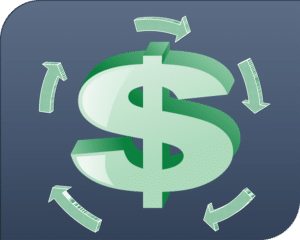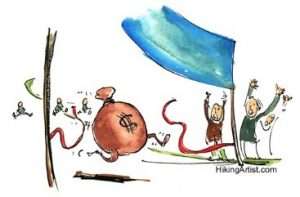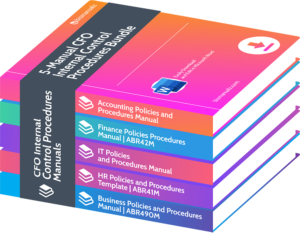What Should a CFO Know About Cash Flow Optimization?

Do you find yourself struggling to maintain a healthy cash flow for your business? If so, you’re not alone. In today’s fast-paced and ever-changing business landscape, cash flow optimization is crucial for the success and sustainability of a company. In this article, we will explore what CFOs need to know about cash flow optimization and how it can benefit your organization. What should a CFO know about cash flow optimization?
What is Cash Flow Optimization?
Cash flow optimization is the practice of effectively managing and enhancing the flow of cash within a company. This involves strategically overseeing expenditures, maximizing income, and optimizing working capital.
By efficiently managing cash flow, a Chief Financial Officer (CFO) can guarantee that the company has sufficient liquidity to fulfill its financial responsibilities, pursue growth opportunities, and maintain a strong financial standing.
This includes monitoring and predicting cash flow, identifying areas for enhancement, implementing cost-saving strategies, and exploring avenues to increase revenue. Ultimately, cash flow optimization is crucial in maintaining financial stability and increasing profitability for a company.
Why is Cash Flow Optimization Important for a CFO?
As a Chief Financial Officer (CFO), understanding the importance of cash flow optimization is crucial for the success of a company. In this section, we will discuss the various reasons why cash flow optimization should be a top priority for every CFO.
From maintaining liquidity and managing working capital to improving profit margins and reducing debt, we will delve into the key areas that are impacted by effective cash flow management. Let’s explore how optimizing cash flow can lead to overall financial success for a company.
1. Maintaining Liquidity
Maintaining liquidity is crucial for CFOs to ensure the financial stability of a company. Here are some steps to help maintain liquidity:
- Regularly monitor cash flow to identify any potential issues.
- Create a cash reserve or emergency fund to cover unexpected expenses.
- Implement efficient billing and collection processes to manage accounts receivable.
- Negotiate favorable terms with suppliers to extend payment deadlines if needed.
- Implement cost control measures to reduce unnecessary expenses.
By following these steps, CFOs can effectively maintain liquidity and contribute to the financial health of the company.
2. Managing Working Capital
Managing working capital is a crucial responsibility for CFOs as it plays a significant role in optimizing cash flow. This involves efficiently managing current assets and liabilities to ensure sufficient liquidity and maximize profitability. To effectively manage working capital, here are some key steps to follow:
- Monitor inventory levels regularly to avoid the risk of overstocking or stockouts.
- Implement efficient processes for accounts receivable and payable to reduce payment delays and improve cash inflow.
- Negotiate favorable payment terms with suppliers to optimize cash outflow.
- Regularly review and optimize key working capital metrics, such as days sales outstanding and inventory turnover.
By taking a proactive approach to managing working capital, CFOs can significantly enhance cash flow, maintain liquidity, and drive overall financial performance.
3. Improving Profit Margins
To enhance profit margins, CFOs can implement the following steps:
- Reduce Costs: Analyze expenses and identify areas to decrease costs without compromising quality or operations.
- Pricing Strategy: Review pricing models to ensure optimal profitability, taking into consideration market demand and competitors.
- Product Mix: Evaluate the profitability of different products and prioritize promoting higher-margin products or services.
- Efficient Operations: Streamline processes, improve productivity, and eliminate inefficiencies to decrease expenses and maximize profits.
Similarly, a real-life example of improving profit margins is the success story of a clothing brand. By renegotiating supplier contracts, implementing cost-saving measures, and introducing popular high-margin products, the brand achieved a 20% increase in profit margins within six months.
4. Reducing Debt
Reducing debt is a crucial aspect of optimizing cash flow for CFOs. Here are steps they can take to achieve this:
- Assess current debt: Determine the types and amounts of debt owed.
- Create a repayment plan: Develop a strategy to gradually pay off debt, considering interest rates and repayment terms.
- Refinance or negotiate: Explore options to refinance debt at lower interest rates or negotiate with lenders for better terms.
- Focus on high-interest debt: Prioritize paying off debt with higher interest rates to minimize interest expenses.
- Control spending: Implement cost-cutting measures and budgeting strategies to free up cash for debt repayments.
- Explore debt consolidation: Consolidate multiple debts into a single loan or credit facility to simplify payments and potentially lower interest rates.
What are the Key Components of Cash Flow Optimization?
As a CFO, understanding the importance of cash flow optimization is crucial for the financial success of a company. But what exactly does this process entail? In this section, we will break down the key components of cash flow optimization and how they contribute to the overall financial health of a business.
From forecasting and budgeting to managing accounts receivable and payable, controlling inventory, and negotiating with suppliers and customers, each aspect plays a vital role in optimizing cash flow. Let’s dive in and explore each component in more detail.
1. Forecasting and Budgeting
Forecasting and budgeting are crucial steps in optimizing cash flow for a CFO.
- Examine past financial data to identify patterns and trends.
- Predict future cash inflows and outflows based on sales projections, expenses, and market conditions.
- Create a comprehensive budget that aligns with the company’s goals and objectives.
- Regularly monitor and update the forecast and budget as circumstances change.
- Analyze discrepancies between actual and projected cash flows to identify areas for improvement.
2. Managing Accounts Receivable and Payable
Managing accounts receivable and payable is crucial for optimizing cash flow. Follow these steps to ensure efficient management:
- Establish clear payment terms with your customers and suppliers.
- Monitor and keep track of outstanding invoices and bills.
- Send timely reminders and follow up on any overdue payments.
- Negotiate favorable payment terms with your suppliers.
- Streamline your invoicing and billing processes for maximum efficiency.
Pro-tip: Simplify and expedite the accounts receivable and payable process by implementing automated invoicing and payment systems, which can greatly improve cash flow management.
3. Controlling Inventory
Controlling inventory is crucial for a CFO to optimize cash flow. To effectively manage inventory, here are some steps to follow:
- Analyze demand patterns and historical data to accurately forecast inventory needs.
- Implement just-in-time inventory management to minimize storage costs and avoid overstocking.
- Establish inventory control systems to track stock levels, identify slow-moving items, and prevent stockouts.
- Negotiate favorable terms with suppliers for bulk discounts or consignment inventory.
4. Negotiating with Suppliers and Customers
- Identify key suppliers and customers.
- Gather necessary information about their needs, preferences, and financial situation.
- Develop a negotiation strategy based on mutual benefits.
- Establish clear objectives and set negotiation parameters.
- Initiate communication and arrange a meeting to discuss terms.
- Present proposals and listen to the concerns of suppliers and customers.
- Negotiate on pricing, payment terms, and delivery schedules.
- Seek compromises and find win-win solutions.
- Document the agreed-upon terms in a written contract.
- Maintain open lines of communication for future collaboration.
A CFO successfully negotiated with a key supplier to extend payment terms during a period of cash flow strain. This allowed the company to continue receiving essential supplies while managing their cash flow effectively. The negotiation resulted in a win-win situation, benefiting both parties and improving the financial stability of the company.
What Strategies Can a CFO Use for Cash Flow Optimization?
As a CFO, one of your main responsibilities is to ensure the financial health of your company. A crucial aspect of this is optimizing cash flow, which involves managing the inflow and outflow of money. In this section, we will discuss various strategies that a CFO can implement for cash flow optimization.
These include creating cash flow projections, utilizing technology and automation, improving cash collection processes, and reducing expenses and increasing efficiency. By incorporating these tactics, a CFO can effectively manage and improve the cash flow of their company.
1. Implementing Cash Flow Projections
Implementing cash flow projections is crucial for optimizing cash flow and ensuring financial stability. Here are the steps to effectively implement cash flow projections:
- Review historical financial data, including cash inflows and outflows.
- Identify and categorize different revenue sources and expenses.
- Forecast future cash inflows based on sales projections and expected payment terms.
- Estimate cash outflows by analyzing historical trends and considering upcoming expenses.
- Consider factors that may impact cash flow, such as seasonality or market conditions.
- Consolidate all projections to create a comprehensive cash flow forecast.
- Regularly monitor actual cash flow against projected amounts and make adjustments as needed.
To improve accuracy and effectiveness:
- Use accounting software or cash flow management tools to automate the process.
- Engage with relevant stakeholders, such as sales and procurement teams, to gather accurate information for projections.
Implementing cash flow projections provides CFOs with valuable insights for decision-making and enables effective cash flow management.
2. Utilizing Technology and Automation
Utilizing technology and automation is crucial for optimizing cash flow. Here are steps to implement this strategy:
- Invest in financial management software to automate cash flow processes.
- Harness the power of electronic payment systems to streamline accounts payable and receivable.
- Implement online banking platforms for real-time access to cash flow information.
- Take advantage of cloud-based solutions for secure data storage and easy collaboration.
- Leverage data analytics tools to identify patterns and trends in cash flow.
By embracing technology and automation, CFOs can enhance efficiency, accuracy, and timeliness in managing cash flow, leading to improved financial performance.
3. Improving Cash Collection Processes
Enhancing cash collection processes is crucial for optimizing cash flow and maintaining financial stability. Here are the steps to take to improve cash collection:
- Establish clear payment terms and policies
- Implement efficient invoicing and billing processes
- Offer convenient payment options, such as online payments
- Regularly follow up with customers on outstanding invoices
- Utilize technology to automate payment reminders and collections
- Consider incentives for early payments or penalties for late payments
- Review and update credit policies to minimize bad debts
- Monitor cash collection performance and analyze trends
By improving cash collection processes, CFOs can accelerate cash inflows, reduce outstanding receivables, and enhance overall financial health.
4. Reducing Expenses and Increasing Efficiency
Reducing expenses and increasing efficiency are crucial steps for cash flow optimization. CFOs can implement strategies to achieve these goals:
- Conduct a thorough review of expenses to identify areas where costs can be minimized.
- Streamline processes by eliminating unnecessary steps and automating repetitive tasks.
- Negotiate better terms with suppliers to secure discounts or lower prices.
- Implement cost-saving measures, such as energy-efficient practices or waste reduction initiatives.
By implementing these strategies, CFOs can successfully reduce expenses and increase efficiency, leading to enhanced profitability and a stronger financial position for the organization.
What are the Common Challenges for CFOs in Cash Flow Optimization?
Cash flow optimization is a crucial aspect of financial management for any organization, and it is a responsibility that often falls on the shoulders of the Chief Financial Officer (CFO). However, this task comes with its own set of challenges that CFOs must navigate to ensure the financial stability and growth of their company.
In this section, we will discuss the common challenges that CFOs face when it comes to cash flow optimization, such as limited access to real-time data, balancing short-term and long-term goals, dealing with economic uncertainty, and managing cash flow during periods of growth or decline.
1. Limited Access to Real-Time Data
Limited access to real-time data can pose a challenge for CFOs looking to optimize cash flow. To overcome this obstacle, there are several steps that CFOs can take:
- Implement advanced financial management systems that can automate data collection and reporting.
- Create real-time dashboards that provide instant access to key cash flow metrics.
- Integrate financial systems with other operational systems to capture real-time transaction data.
- Invest in data analytics tools to identify trends, patterns, and anomalies in cash flow data.
- Collaborate with IT teams to ensure secure and reliable access to real-time data.
- Regularly review and update data governance and security policies to protect sensitive information.
By enhancing access to real-time data, CFOs can make well-informed decisions and proactively manage cash flow for improved financial performance.
2. Balancing Short-Term and Long-Term Goals
Balancing short-term and long-term goals is crucial for CFOs in optimizing cash flow. Here are steps to achieve this balance:
- Evaluate financial objectives: Assess the company’s short-term and long-term goals, taking into consideration factors such as growth, profitability, and sustainability.
- Align cash flow strategy: Develop a cash flow strategy that supports both short-term liquidity needs and long-term investment in growth opportunities.
- Optimize working capital: Efficiently manage accounts receivable, accounts payable, and inventory levels to maintain sufficient cash flow for immediate needs while also allowing for future growth.
- Invest wisely: Make informed investment decisions that strike a balance between short-term returns and long-term value creation.
- Monitor and adjust: Continuously monitor cash flow performance and adjust strategies as necessary to maintain a balance between short-term requirements and long-term objectives.
3. Dealing with Economic Uncertainty
In the face of economic uncertainty, CFOs can take several steps to navigate challenges and ensure optimal cash flow:
- Conduct scenario planning: Analyze various economic scenarios and develop contingency plans to mitigate risks.
- Monitor market trends: Stay informed about the economic landscape, industry developments, and customer behavior to make informed decisions.
- Implement cost-cutting measures: Identify areas where expenses can be reduced without compromising essential operations.
- Diversify revenue streams: Explore new markets, products, or services to minimize reliance on a single revenue source.
- Strengthen customer relationships: Communicate with customers, offer flexible payment terms, and provide exceptional customer service to maintain loyalty.
- Manage cash reserves: Build and maintain sufficient cash reserves to cushion against economic downturns or unexpected expenses.
- Collaborate with stakeholders: Engage with suppliers, lenders, and investors to negotiate favorable terms, secure financing, and maintain strong relationships.
4. Managing Cash Flow during Growth or Decline
During periods of growth or decline, it is crucial for CFOs to effectively manage cash flow in order to maintain financial stability. Here are steps to follow in order to do so:
- Regularly monitor and analyze cash flow projections.
- Identify and prioritize cash inflows and outflows.
- Optimize working capital by managing inventory levels and negotiating favorable terms with suppliers.
- Implement efficient accounts receivable processes to improve collections.
- Control expenses by carefully examining costs and eliminating unnecessary spending.
- Consider exploring financing options to bridge cash gaps during decline or invest in growth opportunities.
- Diversify revenue streams to mitigate risks associated with relying on a single market.
- Stay proactive by continuously reviewing and adjusting cash flow strategies as business conditions evolve.
How Can a CFO Measure the Success of Cash Flow Optimization?
As a CFO, one of your main responsibilities is to optimize the company’s cash flow. But how can you measure the success of your efforts? In this section, we will discuss four key metrics that can help you track and evaluate the effectiveness of your cash flow optimization strategies.
These include cash flow forecasting accuracy, days sales outstanding (DSO) and days payable outstanding (DPO), cash conversion cycle (CCC), and return on investment (ROI). By understanding the significance of these metrics, you can gain valuable insights into the financial health of your company and make informed decisions to improve cash flow management.
1. Cash Flow Forecasting Accuracy
Achieving accurate cash flow forecasting is crucial for CFOs to effectively manage and optimize cash flow. Here are steps to improve accuracy:
- Establish a robust financial data collection system to gather relevant information.
- Analyze historical cash flow patterns to identify trends and seasonality.
- Utilize advanced forecasting techniques, such as regression analysis or time series modeling.
- Regularly update forecasts with actual cash flow data and adjust projections accordingly.
- Monitor and analyze key performance indicators like days sales outstanding and days payable outstanding.
- Collaborate with other departments to incorporate their input and insights into the forecasting process.
- Utilize technology and automation tools to streamline data collection and analysis.
- Regularly review and refine forecasting methodologies based on actual results and feedback.
2. Days Sales Outstanding and Days Payable Outstanding
To effectively optimize cash flow, Chief Financial Officers (CFOs) must pay attention to two crucial metrics: Days Sales Outstanding (DSO) and Days Payable Outstanding (DPO).
- DSO: This metric measures the average number of days it takes for a company to collect payment from its customers. CFOs should strive to decrease DSO by implementing efficient invoicing and collection processes.
- DPO: DPO represents the average number of days it takes for a company to pay its suppliers. CFOs can extend payment terms and negotiate better terms to increase DPO, thereby improving cash flow.
By focusing on reducing DSO and increasing DPO, CFOs can enhance cash flow, ensure sufficient liquidity, and improve the overall financial health of the company.
3. Cash Conversion Cycle
The Cash Conversion Cycle (CCC) is a crucial metric for CFOs to monitor and optimize in order to ensure efficient cash flow management. The CCC measures the time it takes for a company to convert its investments in inventory and other resources into cash flow through sales. To improve the Cash Conversion Cycle, CFOs can take the following steps:
- Analyze and streamline the inventory management process.
- Implement efficient accounts receivable and accounts payable strategies.
- Optimize production and supply chain processes to minimize delays.
- Strengthen relationships and negotiate favorable terms with suppliers and customers.
4. Return on Investment
Return on Investment (ROI) is a crucial metric for measuring the success of cash flow optimization. To assess ROI, CFOs can follow these steps:
- Calculate the net profit generated from an investment.
- Deduct the initial cost of the investment.
- Divide the resulting value by the initial cost.
- Multiply the quotient by 100 to express ROI as a percentage.
Pro-tip: To maximize ROI, CFOs should prioritize investments that yield the highest returns and regularly review and adjust investment strategies to optimize cash flow and drive profitability.
Frequently Asked Questions

What is cash flow optimization?
Cash flow optimization is the process of managing and improving the inflow and outflow of cash within a company. It involves ensuring that the company has enough cash to cover its expenses and investments, while also maximizing the use of available cash for growth and profitability.
Why is cash flow optimization important for a CFO?
As the financial leader of a company, the CFO plays a crucial role in managing the company’s cash flow. A strong understanding of cash flow optimization is essential for a CFO to make well-informed decisions and maintain the financial health of the company.
What are some strategies for optimizing cash flow?
There are several strategies that a CFO can implement to improve cash flow, such as negotiating better payment terms with vendors, implementing efficient inventory management, and closely monitoring and managing accounts receivable and accounts payable.
How can a CFO analyze the company’s cash flow?
A CFO can analyze the company’s cash flow by creating a cash flow statement, which tracks the inflow and outflow of cash over a specific period. This statement can help identify areas where cash flow can be improved and provide valuable insights for decision-making.
What are the potential risks of poor cash flow optimization?
Poor cash flow optimization can lead to financial instability, missed opportunities for growth, and even bankruptcy. It can also strain relationships with vendors and suppliers and damage the company’s reputation.
How can a CFO ensure sustainable cash flow optimization?
To ensure sustainable cash flow optimization, a CFO should regularly review and update the company’s financial policies and procedures, monitor cash flow closely, and make proactive decisions based on accurate data and analysis.
















Leave a Reply